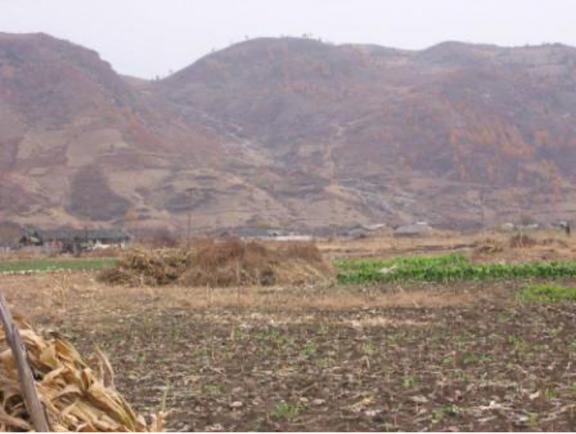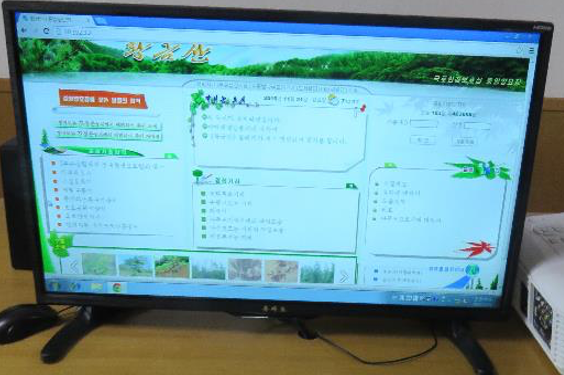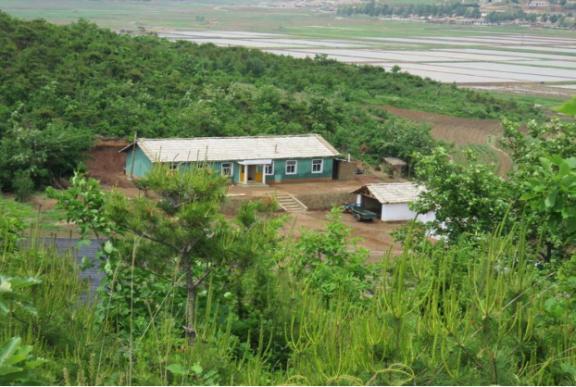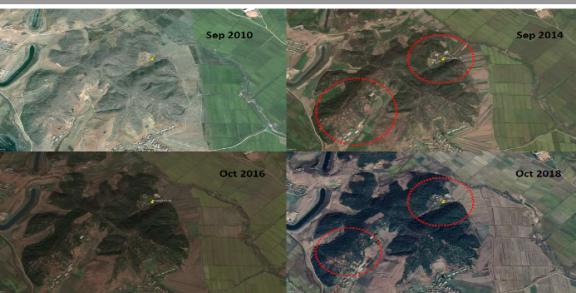Greening North Korea - An opportunity for the GCF?
Deforestation and reforestation are not only national challenges, but global issues. Disappearing forests have a considerable impact on the climate and CO2 balance, micro-climate, watershed management and soil erosion. Today, the role of forests as a critical precondition for the world’s biodiversity is in the spotlight, as many forests are more biodiverse than other ecosystems. Unfortunately, deforestation and forest degradation have reached alarming rates in the last two centuries of industrialization and population growth.
Since pre-colonial times, the status of forests on the Korean Peninsula was characterized by over-use due to common pool problems, where property rights were not clearly defined, and villagers took more wood than was sustainable from communally used forests. Colonization of the country by Japan, the subsequent massive use of resources for Japan’s war effort in World War II and then the Korean War (1950-1953) all exacerbated the problem. In South Korea, starting with the Park Chung-Hee administration in the 1960s, a long-term successful reforestation campaign began with the help of foreign and international donors, including Germany. As a result, the country today has again abundant forests, though still biologically young.
Like South Korea, the Democratic People’s Republic of Korea (North Korea) was once richly endowed with forests, but these resources were poorly managed, though the relatively smaller population size means that pressure for resources was somewhat smaller. In the 1940s, reforestation was seen as a national priority for the DPRK.
However, the devastation of the Korean War and the unsustainable way of central planning meant that the results were disappointing, despite the yearly tree planting campaigns. The situation deteriorated even more rapidly during DPRK’s famine years of the 1990s.
Deforested mountains in Pyonganbukdo © Bernhard Seliger
To date, about 40 percent of the total forest and wooded area in the DPRK has already disappeared or severely degraded, leading to severe consequences for the entire country.
With Kim Jong-Un’s rise to power in 2011-2012, reforestation became an important national priority in DPRK. His ten-year plan for reforestation (first dated 2012-2022, and in a later version 2014-2024) projects a complete tree cover on all deforested mountains. It was followed by another long-term ambitious plan to change forests from prevailing monocultures to more mixed forests with a higher percentage of deciduous trees, able to withstand climate change. International agencies became involved in various projects to reduce adverse effects of deforestation, like the promotion of agro-forestry, in which the Swiss Development Corp., in particular, was very active.
Hanns-Seidel-Foundation (HSF) Korea has been involved in the DPRK since 2003 with environmental projects as a key priority. Since 2008, HSF has focused more on climate change, in particular by supporting the country’s capacity-building for the Clean Development Mechanism and expanding the use of renewable energy in DPRK.
From 2014 to 2017, HSF oversaw a project called “Improvement of rural living conditions through healthy forests – establishment of a Training Center for Sustainable Forestry in DPRK”. This training center is equipped with PCs, books, and e-learning materials on tree management. There is also a forestry intranet homepage that features thousands of texts, video lectures and online materials in Korean.
The Hwanggeumsan Website in the DPRK Intranet © Bernhard Seliger
The Sangso-Ri Reforestation site 2012 - almost bare of trees © Bernhard Seliger
Another hallmark of this project was the reforestation of around 80 to 100 hectares of forest in Sangso-Ri, around 35 kilometers Northwest of Pyongyang. On the lower slopes, a tree nursery was built that contains a variety of native trees cared for by a team of 12 workers. The tree nursery has been successful in a short period of time and has already enhanced the biodiversity of the area, attracting a number of new bird varieties. It has also provided employment opportunities for surrounding communities. In this way, the project contributed to improving local livelihoods, which rely heavily on forest products.
Sangso-Ri 2016 – Tree Nursery © Bernhard Seliger
The Sangso-Ri reforestation site - from 2010 to 2018, illustrating the success of reforestation © Hanns Seidel Foundation Korea
The main focus, however, was on training for sustainable forestry. In the project, 11 local trainings, 5 international seminars and 5 overseas trainings were successfully rolled out to strengthen the Forest Management Research Institute´s technical capacities. More than 800 trainees that participated in the local trainings and international seminars will contribute to the dissemination of technologies and to the development of country-specific advanced technologies in DPRK.
Training with international experts in Sangso-Ri © Felix Glenk
In 2019, DPRK, which had signed all climate-relevant treaties from the Kyoto Protocol to the Paris Agreement, designated the International Department of the Ministry of Land and Environment Protection as the National Designated Authority (NDA) for the Green Climate Fund (GCF). This could mean that there may be new possibilities for cooperation.
For example, one of the things lacking for the sustainable reforestation of DPRK is a comprehensive modern forest inventory. In the past, the inventory was done by sending out many foresters, but more modern methods are needed. However, the lack of access to satellite analysis and modern equipment hampers the shift to a more technologically advanced approach.
Also, in other fields, cooperation with the GCF might be fruitful. DPRK still has some of the most important unspoiled coastal wetlands and tidal flats in the Yellow Sea area, which are important hotspots for biodiversity. Over the years, DPRK has put more effort into protecting their wetlands by becoming a member of the Ramsar Convention on Wetlands and also the East Asian Australasian Flyway Partnership.
This opens another opportunity and area of cooperation, such as the designation of tidal flats as carbon sinks, which are even more powerful than forests. Cooperation with DPRK is never completely free from political considerations, but hopefully a way will be found to enable peaceful cooperation between DPRK and the world to address climate change.
Have questions for Dr. Seliger about the blog post?
You can follow him on Twitter @BernhardSeliger
You can follow the IEU @GCF_Eval #IEUblog
Also, be sure to check out the Hanns-Seidel-Foundation (HSF) Korea website to learn more about their work.
Disclaimer: This guest blog was produced in conjunction with the IEU Virtual Talk on climate change and biodiversity, held in 2020. The views expressed in this guest blog are the author's own and do not necessarily reflect the views of the Independent Evaluation Unit of the Green Climate Fund.





